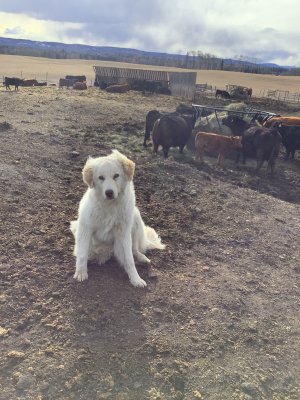Farm Family
Well-known member
I felt bad that I posted my LGD picture the other day and inadvertently caused the conversation of coyotes and donkeys to derail into a discussion about LGDs. I originally posted my LGD because it is what we use for coyote deterrence and it has made a difference. We considered a donkey and decided on the LGD.
One reason was the chickens. Another was yard protection, we were see more rural issues with people and finally our neighbour lost his donkey to a grizzly bear. Not that a grizzly couldn't do the same with an LGD but we have noticed they so far, knock on wood, avoid all the noise and fuss of a dog.
This is my very first thread and I sure hope I am doing this right…an experiment too.
So I will try to post about our LGD experiences here vs overwhelming other threads though I can't promise it won't happen again. I get excited to share this project. Probably because we've experienced a lot of naysayers. I know the whole LGD cattle thing has been met with reserve and trepidation and I am certainly learning myself but I feel it is a viable option. I thought a thread would provide conversation. There really is little study on LGDs and cattle. There was a blog about an LGD study in the Sierra Nevada but it seems to have sort of dwindled away. I was super curious and even reached out to the researcher but nothing came of it.
I get excited to share this project. Probably because we've experienced a lot of naysayers. I know the whole LGD cattle thing has been met with reserve and trepidation and I am certainly learning myself but I feel it is a viable option. I thought a thread would provide conversation. There really is little study on LGDs and cattle. There was a blog about an LGD study in the Sierra Nevada but it seems to have sort of dwindled away. I was super curious and even reached out to the researcher but nothing came of it. 

One reason was the chickens. Another was yard protection, we were see more rural issues with people and finally our neighbour lost his donkey to a grizzly bear. Not that a grizzly couldn't do the same with an LGD but we have noticed they so far, knock on wood, avoid all the noise and fuss of a dog.
This is my very first thread and I sure hope I am doing this right…an experiment too.
So I will try to post about our LGD experiences here vs overwhelming other threads though I can't promise it won't happen again.


